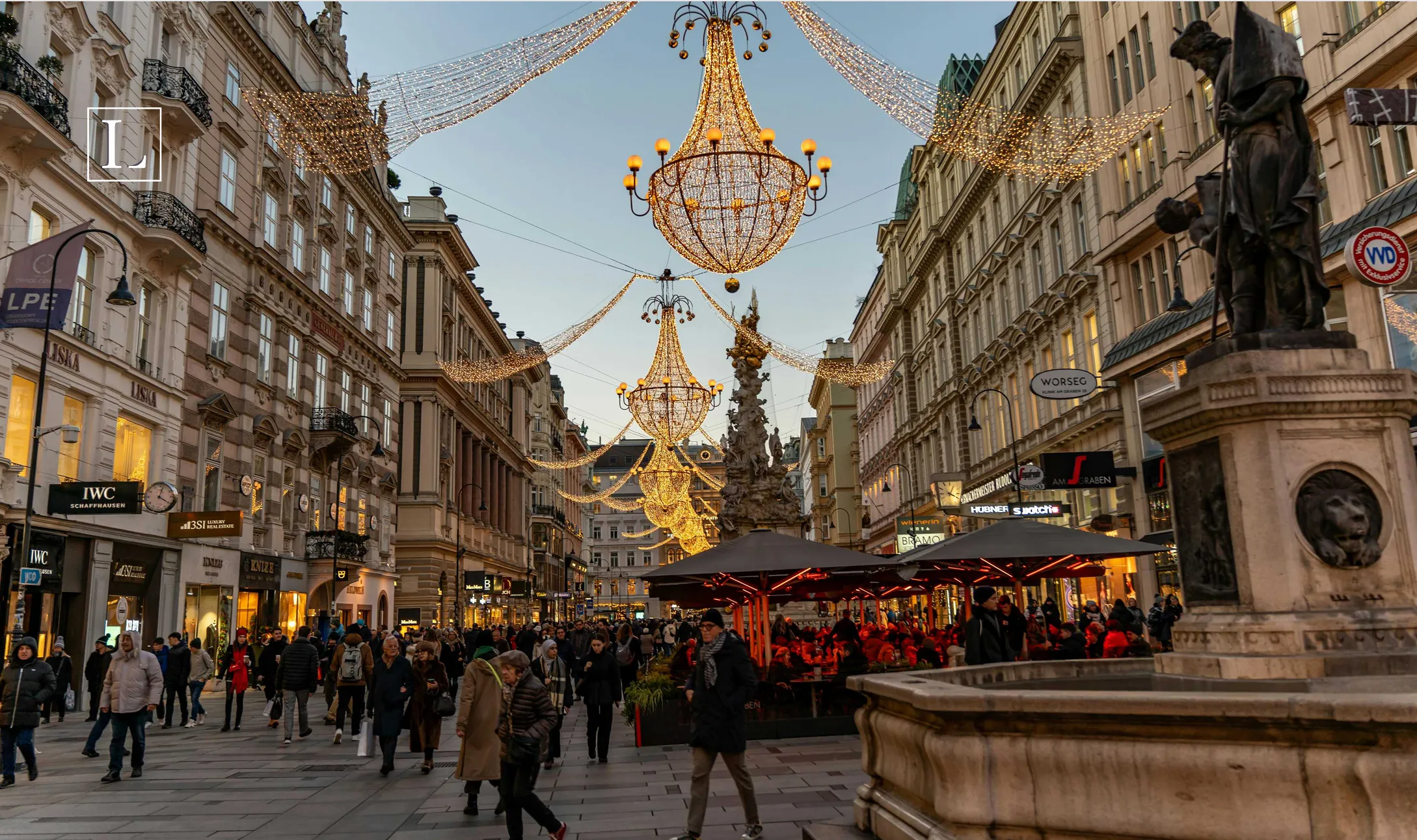Real estate for rent in Austria
Real Estate Investment in Austria – pros and cons of buying a property to rent out to expats. Districts, prices, about commercial property.

Real estate for rent in Austria
Austria is an ideal country not only for living, but also for real estate investment. Both among local residents and among foreigners, the acquisition of real estate as a source of income is very popular.
Austria is one of the European countries with the highest percentage of tenants. 41.2% of the population prefer to live in rented, rather than in their own real estate. Moreover, in the capital, this figure is much higher, approximately 75% of homes are rented. On average, in Europe this number is 29.9%. That is why, if you plan to purchase real estate for subsequent rental and stable income, Austria is one of the best options.
It is important to note that for foreigners, the procedure for buying property in Austria may differ compared with the locals. So, citizens of countries outside the EU, to purchase real estate must obtain a residence permit. There is another way - you can register a company in Austria and purchase real estate as an asset of this company.
Where to buy property for rent?
Of course, one of the best options for the acquisition of real estate and its subsequent lease is the capital of Austria, Vienna. This city is ideal - firstly, in terms of consistently high demand, and secondly, in terms of rental income.
Rent for housing in Vienna has grown by 60.3% since 2006, while the national average is lower, 53%.
When purchasing real estate in Vienna as an investment, it is important to choose the right area for this. The most expensive area is Inner City. The rental rate here is the highest in Austria, from 18 to 22 euros per square meter per month. However, due to the high real estate prices in this area, rental yield here is low compared to other areas, it ranges from only 1.72% for a 130-meter apartment to 2.33% for a 50-meter apartment. With this level of profitability, almost no one buys apartments here to rent them out.
Much better options for real estate investment are located in areas near the city center with moderate real estate prices. First of all, we are talking about Margereten, Mariahilfen, Favoriten, Hernals, or Leopoldstadt. Rental yield here varies from 5% for small apartments, to 3% -4.4% for apartments with a large area.
As for other cities in Austria, you can also consider Salzburg, here you can get from 2.4% to 3.8% yield, as well as Graz - an indicator here is from 2.5% to 4.9%
Which real estate is better to buy?
In terms of profitability, the best option would be a small one-bedroom apartment - according to statistics, the smallest apartments return the highest rental yields.
At the same time, buying too tiny real estate is not the best decision - residents value comfort. According to recent reports, the average living space in Austria is growing. For example, in 2016 the average area was 99.3 square meters, a year later - already 99.6 square meters. In 2018, this figure was 100.1 square meters.
In addition to the area, it is important to consider the location - good transport accessibility will increase the attractiveness of the apartment. Other important factors are good heating in the apartment, a convenient layout, soundproofing (especially if the windows overlook a busy street), the view from the windows to the green area or the sights of the city.
Why is it profitable to buy real estate at the construction stage?
A good option from the point of view of investing will be the acquisition of real estate at the construction stage. This is beneficial for several reasons.
First, you won't need to pay the full amount right away. Payments are phased. At the stage of construction of the pit, the first payment is made, usually it is 10-15%. The next payment occurs at the stage of construction, it is about 30%, approximately the same amount must be paid after the construction is completed, and the remainder is often allowed to be paid within 3 years from the moment of purchase.
Thus, the buyer receives a guarantee that the developer will eliminate possible defects, this serves as insurance against risks. In case of ruin of the developer, all invested funds, of course, are reimbursed. In addition to security, such a scheme is also attractive because you do not need to immediately invest all the free money in this transaction.
Secondly, buying an apartment at the construction stage in order to rent it out, you can save up to 20% of its cost. The fact is that with such a purchase, the state will refund you 20% VAT. Thus, in Austria, the government stimulates the acquisition of housing in order to rent it out and pay taxes on monthly income. Keep in mind that the state will monitor the subsequent use of the apartment - therefore, you will have to adhere to the original plan and be sure to rent it out, and also remember to pay taxes.
Commercial property
Buying commercial real estate traditionally has more risks compared to residential real estate, however, the income here can be much higher.
Demand for commercial real estate in Austria today is quite high, in recent years there has been an increase in it, with 50% of such real estate acquired by foreigners. The high demand for commercial real estate is also evidenced by low interest rates in the case of bank financing.
A key factor in the growth of demand for commercial real estate is the use of new models for joint investment in large investment projects for structured groups of small and medium private investors, as well as legal entities. This financing model requires long-term investments and is characterized by special methods for optimizing taxation for investors.Regarding specific sectors of commercial real estate, the following are most in demand:
42% – retail spaces
Shopping centers, shops and other retail spaces have the highest returns - from 4 to 6%. The exact figure depends on the location, duration of the contract, sales opportunities and other factors.
36% – office spaces
Profitability from office buildings ranges from 3 to 6% per year. However, it is worth considering that office space is considered a rather risky investment, especially if we are talking about a large number of small and medium-sized tenants. A more reliable option is 1-2 tenants with long-term contracts.
12% – hotels
The annual income from hotels is about 2-6%. The exact figure depends on the location of the hotel and the type of contract with the operator: it can be a rental or management contract. The most reliable contracts from the investor's point of view are concluded with international hotel operators. The return of hotels located in the center of large cities can reach 5.5-6%. If we talk about the historical center of Vienna, Inner City, hotels here have an annual yield of 2-4%.
Secondary Market
The secondary real estate market in Austria is quite large, especially when it comes to Vienna and other large cities. In most central areas of Vienna, there is not much space for new buildings, so most of the market is occupied by secondary housing. Often, even the attic rooms are actively converted into small two- and three-room apartments.
From the point of view of the purchase procedure, the secondary real estate is no different from the new one. However, it is worth considering that the condition of the object may be different - that is why realtors advise to check the condition of the property before buying. Based on the audit, the buyer receives the right to bargain with the seller. For example, if any defects or malfunctions are detected.
The cost of secondary housing when buying is usually lower than the cost of new housing. In Vienna, for example, the average cost per 1 square meter of secondary housing is on average 1000-1500 euros lower than the cost per square meter of new real estate. But the rent for such housing is usually 1-2.5 euros per month lower for 1 square meter. In addition, it is important to take into account that often secondary housing requires more attention than new - repair is required before renting the apartment, regular elimination of malfunctions that may occur more often due to the age of the property.
Conclusion
- Vienna is the best option for real estate investment: there is consistently high demand and a high level of profitability.
- It is most beneficial to rent one-bedroom apartments in Vienna districts located near the center, but not in Inner City - the profitability of housing there is low.
- By purchasing real estate at the construction stage for rent, you can save 20% of the cost.
- Among commercial real estate, the most profitable will be invested in the retail sector.
- Resale property is cheaper, but it will not significantly affect the return on investment, since the rent for it is also lower.
Share your contact details, and we will happily assist you in finding your dream property







-p-2000.webp)
.avif)
%20(2).avif)





